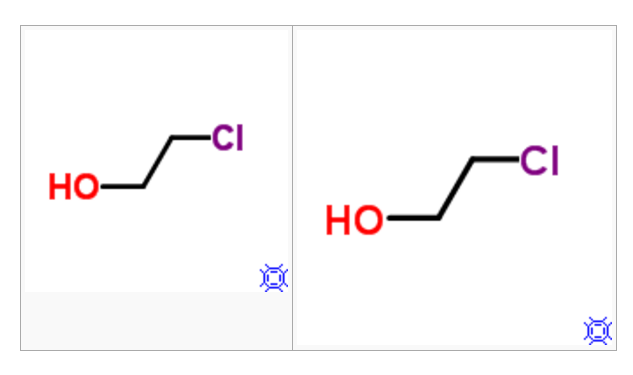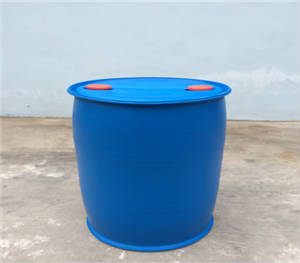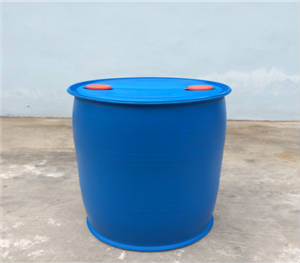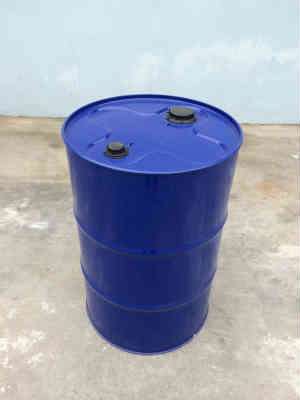2-氯乙醇 CAS NO 107-07-3 新闻
2-氯乙醇 CAS NO 107-07-3
-

- CasNo:107-07-3
- 外观:无色透明液体
- 分子式:C2H5ClO
- 生产能力:
- Inquiry
详细信息
2-Chloroethanol CAS Numbers 107-07-3
2-Chloroethanol with CAS no 107-07-3 under the brand names Mallak ECH.We manufacture and export this product used in building block in the production of active pharmaceutical ingredients(API),biocides and plasticizers.Its similar name are 2-Choro-1-ethanol;Methanol-methyl chloride;1-Choro-2-hydroxyethane.
Appeatance:Clear, colorless liquid
Odour:Sweet pleasant
Product Name:2-Chloroethanol
CAS: 107-07-3
Formula: C2-H5-Cl-O
Purity:99.5%
Impurity:0.50% max
Moisture:0.50%
Density:1.202-1.206g/ml at 20℃(lit)
Boiling Point:128-130℃
Flash Point:57.26℃
Synonyms/Common Names
Ethanol, 2-chloro-Ethylene chlorohydrin
Short-Term Toxicity
14-Day (Topical Application) (C50135) Completed
Rats: F344/N; Mice: Swiss
13-Week (Topical Application) (C50135) Completed
Rats: F344/N; Mice: Swiss
Dose: R: 0, 62, 1000, M: 0, 50, 450 MG/KG/10 PER GROUP.
Long-Term Carcinogenicity
2-Year (Topical Application) (C50135) Completed
TR-275 (NIH Number: 86-2531) (Peer Review Approval 07/27/1984A )
Toxicology and Carcinogenesis Studies of 2-Chloroethanol (Ethylene Chlorohydrin) (CASRN 107-07-3) in F344/N Rats and Swiss CD-1 Mice (Dermal Studies)
Rats: F344/N; Mice: Swiss
Carcinogenesis Results
Male Rats No Evidence
Female Rats No Evidence
Male Mice No Evidence
Female Mice No Evidence
Dose: R: 0, 50, 100, M: 0, 7.5, 15 MG/KG/50 PER GROUP.
Genetic Toxicology
Chromosome Aberrations (208472) Completed
Mice
Negative
Drosophila (595891) Completed
Citation: Valencia, R., Mason, J.M., Woodruff, R.C., and Zimmering, S. Chemical mutagenesis testing in Drosophila: III. Results of 48 coded compounds tested for the National Toxicology Program. Environ. Mutagen. Vol. 7 (1985) 325-348
Reciprocal Translocation/Sex-Linked Recessive Lethal Negative
In Vitro Cytogenetics (CA/SCE) (165108) Completed
Citation: Ivett, J.L., Brown, B.M., Rodgers, C., Anderson, B.E., Resnick, M.A., Zeiger, E. Chromosomal aberration and sister chromatid exchange tests in Chinese hamster ovary cells in vitro IV: Results for 15 chemicals Environ. Molec. Mutagen. Vol. 14 (1989) 165-187
Sister Chromatid Exchange Positive
Chromosome Aberrations Positive
Micronucleus (666681) Completed
Citation: Shelby, M.D., Erexson, G.L., Hook, G.J., and Tice, R.R. Evaluation of a three-exposure mouse bone marrow micronucleus protocol: Results with 49 chemicals. Environ. Molec. Mutag. Vol. 21 (1993) 160-179
Mice: B6C3F1
Male Negative
Mouse Lymphoma (951597) Completed
Citation: McGregor, D., Brown, A., Cattanach, P., Edwards, I., McBride, D., Riach, C., and Caspary, W. Responses of the L5178Y tk+/tk- mouse lymphoma cell forward mutation assay: III. 72 coded chemicals. Environ. Molec. Mutagen. Vol. 12 (1988) 85-154
Mice
Positive
Salmonella (051370) Completed
Citation: Haworth, S., Lawlor, T., Mortelmans, K., Speck, W., and Zeiger, E. Salmonella mutagenicity test results for 250 chemicals Environ. Mutagen. Vol. 5 (Suppl 1) (1983) 3-142
Positive
Salmonella (052370) Completed
Citation: Haworth, S., Lawlor, T., Mortelmans, K., Speck, W., and Zeiger, E. Salmonella mutagenicity test results for 250 chemicals Environ. Mutagen. Vol. 5 (Suppl 1) (1983) 3-142
Positive
Salmonella (552370) Completed
Citation: Haworth, S., Lawlor, T., Mortelmans, K., Speck, W., and Zeiger, E. Salmonella mutagenicity test results for 250 chemicals Environ. Mutagen. Vol. 5 (Suppl 1) (1983) 3-142
Positive
Sister Chromatid Exchanges (208472) Completed
Mice
Sister Chromatid Negative
Sister Chromatid Exchanges (495716) Completed
Mice
Sister Chromatid Negative
Organ Systems Toxicity
4 to 6 GD Conventional Teratology (Intravenous) (TER84070A) Completed
Female Mice: Swiss CD-1
Mice Maternal Positive
Mice Fetal Positive
Dose: 60, 120 MG/KG/DAY.
6 to 8 GD Conventional Teratology (Intravenous) (TER84070B) Completed
Female Mice: Swiss CD-1
Mice Maternal Positive
Mice Fetal Positive
Dose: 60, 120 MG/KG/DAY.
8 to 10 GD Conventional Teratology (Intravenous) (TER84070C) Completed
Female Mice: Swiss CD-1
Mice Maternal Positive
Mice Fetal Positive
Dose: 60, 120 MG/KG/DAY.
10 to 12 GD Conventional Teratology (Intravenous) (TER84070D) Completed
Female Mice: Swiss
Mice Maternal Positive
Mice Fetal Positive
Dose: 60, 120 MG/KG/DAY.
6 to 14 GD Conventional Teratology (Intravenous) (TER84071) Completed
Female Rabbits: New Zealand White
Rabbits Maternal Negative
Rabbits Fetal Negative
Dose: 9, 18, 36 MG/KG/D.
Toxic Effects and Modes of Action
2-Chloroethanol produces both local and systemic toxic effects. Systemic toxicity can develop after inhalative or oral intake and also after percutaneous absorption. The main symptoms involve central nervous system depression; in mild cases the symptoms are stupor, dizziness, headaches, nausea and vomiting [1- 4]; larger doses can lead to confusion, unconsciousness, convulsions, reduced blood pressure and central paralysis [1-3, 5]. In addition, particularly after higher doses, damage to the liver, kidneys, lungs and cardiocirculatory system can develop; pulmonary oedema, arrhythmia, proteinuria, haematuria and reduced blood pressure have been described [2, 3, 6]. After repeated intake, the substance tends to accumulate [1, 4, 6, 7]. On the intact skin, 2-chloroethanol causes weak local irritation [8, 9]; sensitization tests with the substance have yielded negative results.
Inhalation toxicity of 2-chloroethanol
In another study [30], a single exposure to as little as 7.5 ml/m3 for 1 hour was lethal for rats; inhalation of 2 ml/m3 resulted in severe pathological changes and was also lethal after repeated exposures. Very high inhalation toxicity of 2-chloroethanol was also found in a study [32] in which exposure of rats to a concentration of 32 ml/m3 for 4 hours killed some of the animals.
Reduced growth which could not be accounted for entirely by reduced food consumption was seen in studies in which groups of 5 young rats were given 2-chloroethanol concentrations of 0.12 or 0.16 % in the diet for 220 days [30]. Concentrations of 0.24% and more caused a dose-dependent increase in mortality; 0.08% 2-chloroethanol in the diet (34.6 mg/kg body weight and day) did not inhibit the growth of rats in these studies [30]. In 90-day feeding studies with rats, dogs and monkeys, a no effect level for 2-chloroethanol of about 45 mg per kg body weight was determined.
n Company Overview
Wuxi Ginkgo Plastic Industry Co.,Ltd. was founded in 1985, mainly engaged in
2-chloroethanol and phenolic resins, now it is the major manufacturer of industrial
grade and pharmaceutical grade 2-chloroethanol. It is located in Heqiao Town,
Yixing City and Jiangsu Province, where is known as a tourist attraction, pottery
capital and the hometown of professor. The company always attach importance
to technological innovation and talent cohesion, with many domestic famous
universities maintaining cooperation in scientific research, thereby a highly qualified
technical team is cultivated. It achieves ISO 9001, ISO 14001 and OHSAS 18001,
and is repeatedly rated as "Advanced Units For Safe Production" and "Clean Factory".
n Company Concept
Over the years, the company has been adhering to the concept of "safety in
production, environmental protection priority, people-oriented", increasing and
improving safety facilities, optimizing environmental governance, reducing pollutant
emissions, protecting employees' occupational health and safety, and protecting the
environment.
n Production Capacity
Due to the efforts of all staff, the company has a workshop of 1500 square meters
and an experimental center of 500 square meters. The production process and
quality control are stable and reliable, and product quality has reached international
standards, which can meet the requirements of users at home and abroad.






